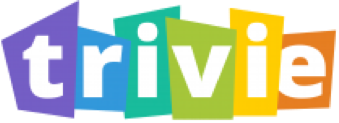One of the most difficult goals faced in corporate learning is achieving increased learner retention. We know from Benjamin Bloom’s studies in the mid-1980’s, that learning reinforcement can significantly propel learner performance. In Bloom’s studies, students who received learning reinforcement outperformed 90% of the students who received only classroom training. But what is really going on when learning reinforcement tools are used? To understand that mechanism, we need to understand the term “retrieval practice.”
What is retrieval practice anyway?
Think of retrieval practice as the opposite of putting information into learners’ heads, like we do in the classroom. Instead, retrieval practice focuses on getting information out of learners’ heads - also referred to as active recall. But when we get it out, we’re looking for more than just achieving success with rote memorization and retrieval. Those tend to be short-term gains for our learners.
Where we break down as educators are in using tools like quizzes and exams to make sure a learner has ‘memorized’ all of the information presented. The subtle difference is that these types of techniques are really not learning strategies, nor should they be considered learning reinforcement tools. Instead, they’re designed to assess a learner’s knowledge at a given point in time.
So how is retrieval practice leveraged?
What’s required is to present the learner with more significant challenges. When we do that we help them convert knowledge and information into wisdom that can be demonstrated on the job. Simply recalling information is not nearly as effective as using that information to solve problems. We have Google to simply look up information. What we want to achieve is learner understanding and to cause a gain in their critical thinking ability. We do that using retrieval practice.
Using retrieval practice as a learning strategy doesn’t necessarily mean that we need to be overly-complicated with our exercises - or even that we take the fun out of it. What it does mean is that we construct exercises in which a person has to “think and take some action” using the knowledge and information that they just learned.
An example to which we can all relate is visiting Starbucks. Let’s consider the job of barista. It would be one thing to make the baristas memorize all of the various types of drinks - which they probably have to do. But instead, wouldn’t it be far more valuable to have them use retrieval practice to answer a question like this that might come from a client: “I need something refreshing. What can you suggest?” That’s a very different question than “What iced drinks do you serve?”
Taking the next steps
So when you set up your retrieval practice exercises, think about how you can use the information that was presented in the corporate classroom, and how to convert that into a critical-thinking exercise where the learner has to solve problems. That’s where real gains can be made. And for the record, you can also play Trivie in line at Starbucks while you are waiting for your latte. Two minutes could mean two new concepts that you can retrieve.



.png?width=1920&name=5a7f8d54c7942700013373c6_A-strategy-for-increased-knowledge-retention%20(1).png)
-1.png?width=413&name=5ac3a1e0f1502efb6a6160b0_Trivie1%20(1)-1.png)




